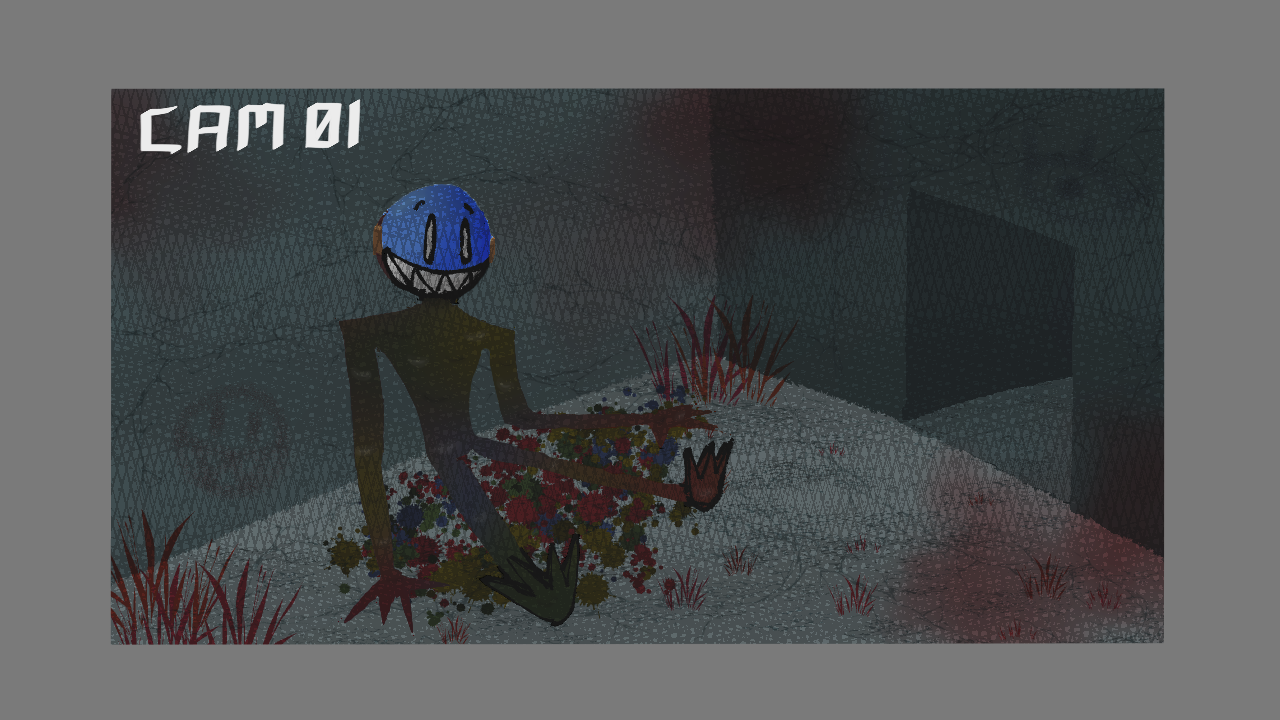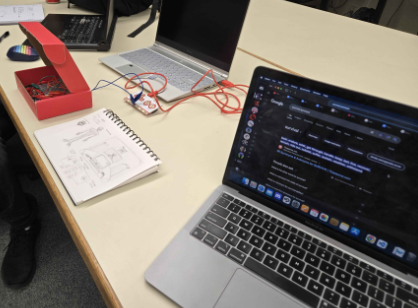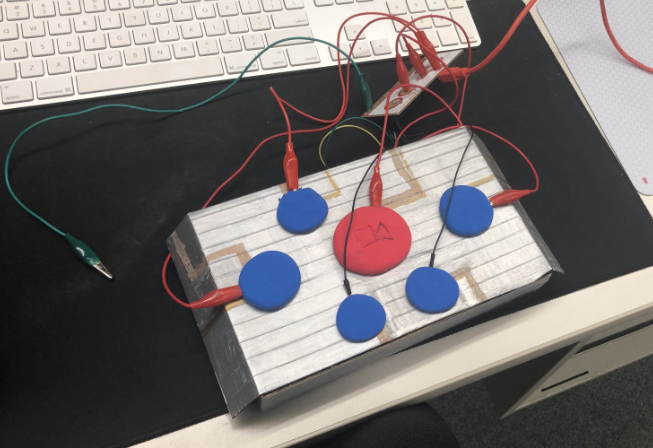Melting Dream

Screen capture of monster at initial spawn.
Melting Dream was an JavaScript project developed during my studies at Cal State East Bay, created in collaboration with Anna Godfrey and Alan Garcia. The project’s goal was to design an immersive horror-inspired experience that combined digital gameplay with a physical control interface, drawing inspiration from the Five Night's at Freddy's earlier works. Built using the p5.js coding library and a custom MakeyMakey-powered control board, the game placed players in the role of a urban explorer trapped within an abandoned facility, managing aged doors and systems to survive against an encroaching monster. The central objective was to explore how tactile, real-world interaction could heighten immersion and tension in a digital game environment.
As the lead programmer and gameplay designer, I was responsible for integrating the physical hardware interface with the p5.js environment, assembling and implementing visual assets, and designing the logic that connected physical inputs to in-game reactions. This included establishing communication between the MakeyMakey board and the JavaScript code, scripting gameplay events, and managing the overall game loop and scene transitions. I also contributed to creative direction and prototyping, ensuring that both the physical and digital elements worked cohesively to deliver a tense and engaging player experience.

Our early process involved plenty of sketching and toying with wires.
My work began with early experimentation on how to meaningfully connect physical input to digital response within a browser-based environment. Using p5.js as the foundation, I programmed a system that linked MakeyMakey button presses to in-game console interactions—allowing players to open and close doors, operate vents, and monitor environmental systems from their “security terminal.” These tactile inputs replaced standard keyboard controls, encouraging players to engage physically with the experience.
I collaborated closely with Alan Garcia, who created the project’s visual assets, to compile and implement them into the p5.js framework. Meanwhile, Anna Godfrey designed and fabricated the physical control board, refining its layout and feel through iterative prototyping. Together, we tested wiring configurations and response timings to ensure reliable, real-time communication between hardware and software.
A gameplay element that i'm particulary proud of designing, is a late game "scare" to give players one last rush before victory. To sustain immersion and physical engagement, I scripted an escalating sequence of in-game events culminating in a late-game “electrical fault” that functionally left them helpless. This required players to physically open the board’s casing and “repair” it during gameplay at haste, breaking the traditional boundary between player and interface. This interactive twist became a defining feature of the experience, transforming a simple control setup into a core storytelling device.

Each button wired to in-game, with this controller opening upon a hinge.
Melting Dream was presented to a class of over twenty-four students as the final project for its course. The resulting experience successfully demonstrated how physical-digital hybrid design—powered by simple JavaScript and p5.js systems—can evoke strong emotional responses and deepen player connection through tangible interaction.
In reflection upon this project, I believe my greatest success in truly integrating the gameboard into the experience was the "electrical fault" event I pitched and coded. Through that, I got to see many scramble hurriedly to "fix" their controls before the monster took advantage. While considering what I could have done better, overall the game stays bit too strictly to the inspiration in the actual game outside the unique events involving the controller. Making sure to offer more beyond aside from the controller is a lesson I will take.